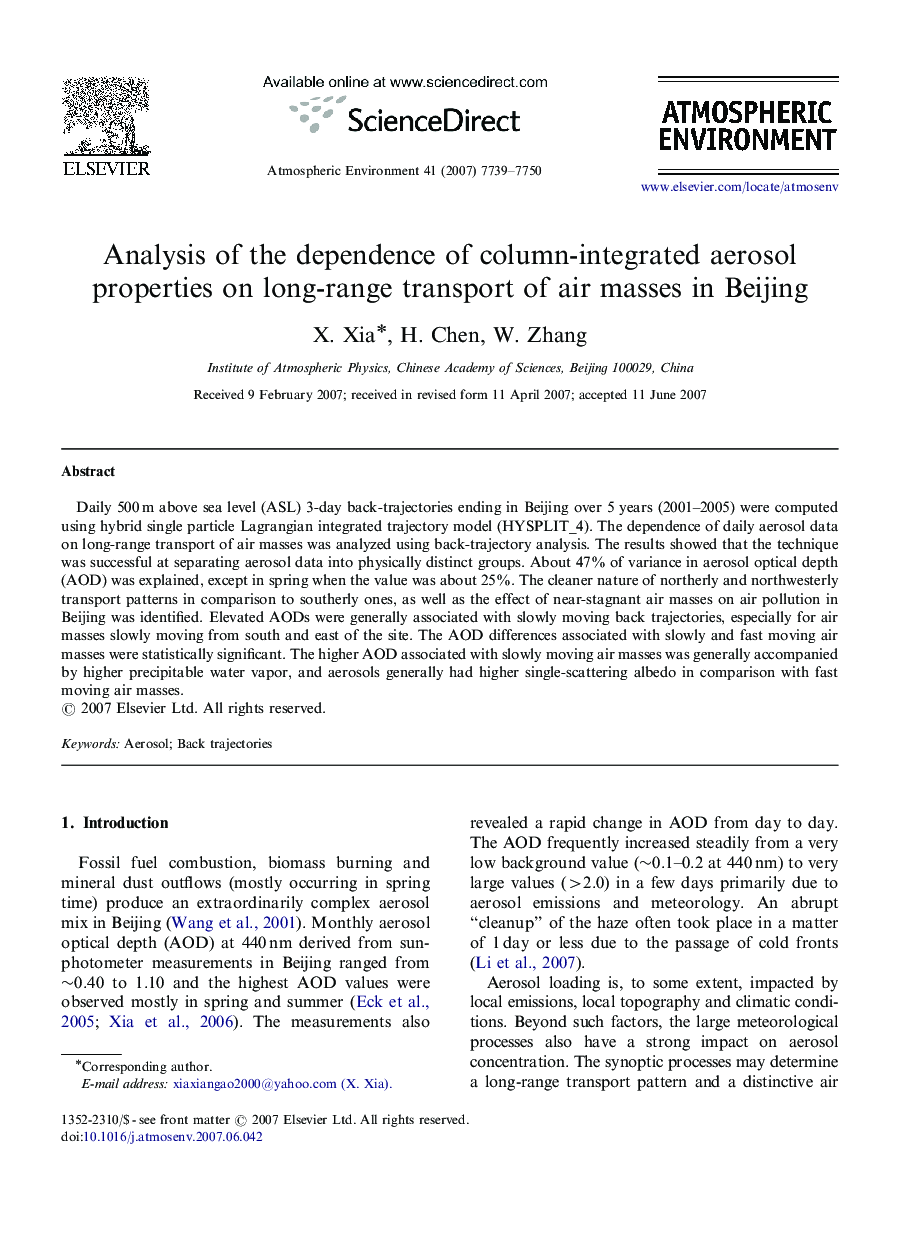| Article ID | Journal | Published Year | Pages | File Type |
|---|---|---|---|---|
| 4443105 | Atmospheric Environment | 2007 | 12 Pages |
Daily 500 m above sea level (ASL) 3-day back-trajectories ending in Beijing over 5 years (2001–2005) were computed using hybrid single particle Lagrangian integrated trajectory model (HYSPLIT_4). The dependence of daily aerosol data on long-range transport of air masses was analyzed using back-trajectory analysis. The results showed that the technique was successful at separating aerosol data into physically distinct groups. About 47% of variance in aerosol optical depth (AOD) was explained, except in spring when the value was about 25%. The cleaner nature of northerly and northwesterly transport patterns in comparison to southerly ones, as well as the effect of near-stagnant air masses on air pollution in Beijing was identified. Elevated AODs were generally associated with slowly moving back trajectories, especially for air masses slowly moving from south and east of the site. The AOD differences associated with slowly and fast moving air masses were statistically significant. The higher AOD associated with slowly moving air masses was generally accompanied by higher precipitable water vapor, and aerosols generally had higher single-scattering albedo in comparison with fast moving air masses.
